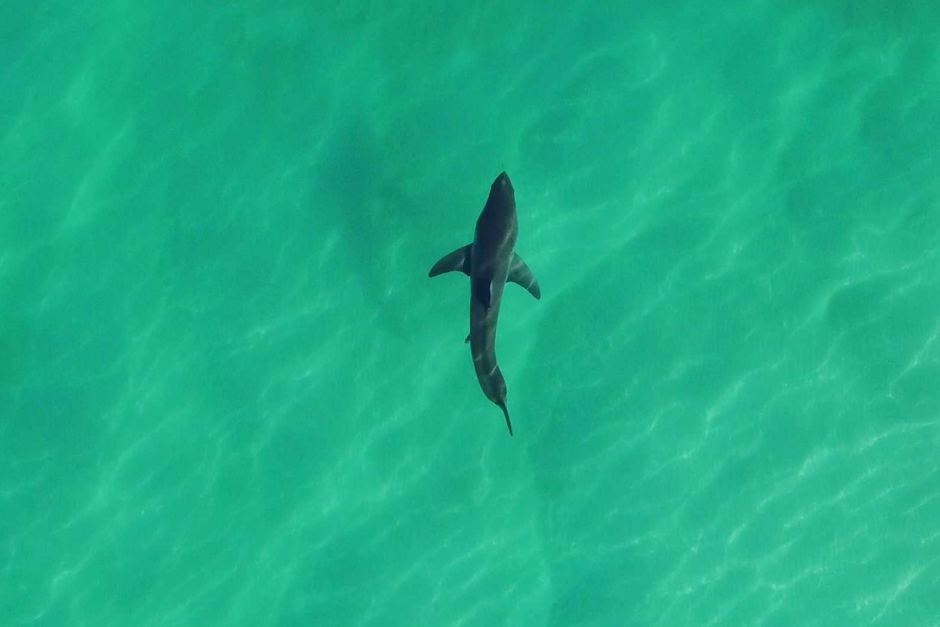To increase safety on its beaches, The Australian government of South Wales has launched a programme that employs several new technologies to monitor shark sites using autonomous drones, smart fisheries and sensors that detect their presence and send alerts to protect beachgoers from danger.
Marine tourism is of great importance and constitutes a strong hub for the economy in Australia as it attracts millions to practice water activities such as swimming, diving, surfing and others. But they are not without the risk of storms, drowning or encountering dangerous marine creatures such as jellyfish or sharks.
As Australia is famous for its beaches, The destination of millions of swimmers and surfers every year, The possibility of encountering a shark in the sea is an imminent danger that requires immediate treatment. In recent years, the Australian government has been able to reduce these incidents through effective shark response programmes, rapid response and successful medical interventions. Despite a decrease in deaths from shark attacks, Accidents still exist, It is causing panic among beachgoers, costing Australia's tourism sector a huge toll.
It is worth noting that recent accidents have become unprovoked to sharks by swimmers, Nets set up by responsible authorities to deter sharks from approaching the shores do not represent a sufficient protection barrier. Traditional methods are generally not sufficient to eliminate the danger once and for all. On the other hand, catching and killing sharks harms the marine environment due to its importance in preserving biodiversity. So, Authorities must speed up incident response and strike the right balance between keeping beachgoers, swimmers and surfers safe. and the protection of ecosystems and marine life.
As there is no magic or immediate solution, Gradual plans should be drawn up and technology employed in their application. After tripling the funding for shark handling programs to nearly $21 million, The NSW Government has developed the five-year shark management strategy in coordination with coastal local councils and the NSW Surfer Life Protection Foundation.
Within this strategy, After conducting the necessary research, A programme to apply a range of technologies along the beaches of New South Wales was launched in late summer.
The program includes a new fleet of drones, Which entered the observation experience of more than 50 beaches to discover sharks and other marine creatures. Once a shark is spotted, The siren is sounded to communicate with the beach authorities directly.
The experience lasted 5 weeks at Coffs Harbor, The planes have made more than 8,000 flights, covering more than 25,000 kilometers and spotting nearly 350 sharks in 48 separate locations. A second experiment was also carried out to compare helicopter sightings with drone sightings.
The program also included marking sharks for easy identification, Where the external tags are placed on the sharks after catching, Along with audio devices surgically implanted inside the body of the fish, To record its natural movements to help identify environmental and biological factors.
37 stations were also deployed, They are listening stations linked to satellites and detect the presence of sharks and other tagged marine organisms within 500 meters, The information is then sent to the satellite. These stations are also linked to the "Sharek Smart" application that was launched as part of the project, Other features such as beach safety and weather forecast are included. The application transmits information directly to the beach authorities and rescue crews of the Council, It in turn instructs beachgoers to download it.
Besides the stations, Along the coast are hundreds of sensors that receive additional information about voice-tagged sharks. These receivers differ from others in that they store data that should be manually loaded at regular intervals.
The program also included 170 smart shark fisheries to detect their presence and protect beachgoers. It is a series of fishing lines installed on buoys with large fishing hooks that are lowered into the oceans to attract sharks and thus reduce their numbers near the shores, They differ from traditional fisheries because they are not designed to kill sharks. Instead, alerts are sent to response teams that rush to tag the shark and move it away. They are only placed where immediate response teams are available.
The program also included smart buoy technology, It is an advanced observation technology that works with sonar rays to monitor moving objects the size of sharks and send them to the concerned teams, It is currently being tested and improved. The government has also allocated part of the funding to conduct research and launch awareness and community education programs.
While measuring the success of expanded technological solutions and monitoring the challenges of their application, Shark nets continue to be deployed as part of the Greater Sydney Area Shark Fishing Programme.
Aerial monitoring and data collection can help scientists understand the factors that may affect shark movements and distribution.
with an unprecedented degree of testing and experimentation on techniques and means of mitigating shark interactions, This program is the largest in the world, It helps improve the capabilities of rescue crews, and enhance the safety of millions of beachgoers each year, The app also helps them plan safe trips.
In the long run, The expanded use of these technologies will contribute to meeting current and future requirements in those tourist coastal areas.
References:
- https://www.9news.com.au/national/worlds-largest-shark-management-program-deployed-to-nsw-beaches/7b7dfc76-5711-486b-bbb7-bdcf9f310cc6
- https://www.nsw.gov.au/news/new-training-and-technology-to-target-shark-attacks-summer
- https://theconversation.com/shark-nets-and-culls-dont-necessarily-make-australian-beaches-safer-124156






